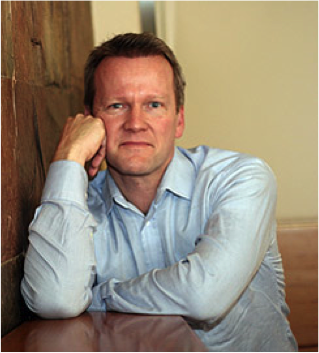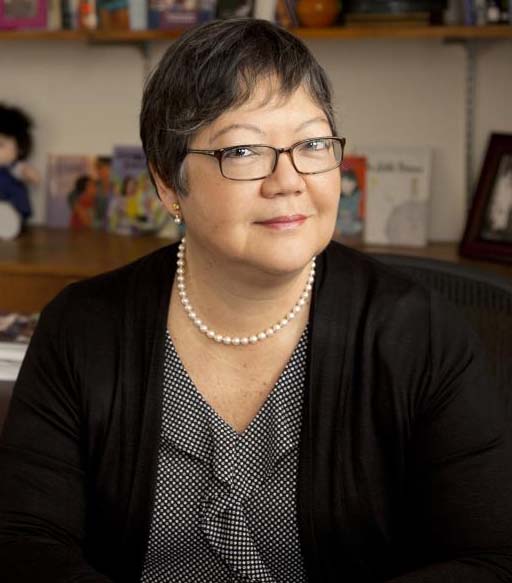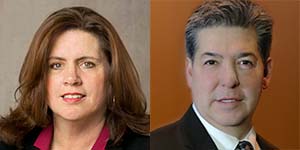
by Miki Aristorenas
How do high-performing countries recruit and prepare profession-ready teachers? On August 24, world renowned education author and researcher Linda Darling-Hammond, backed by a panel of leading international and U.S. education voices, shed light on this question in the inaugural installment of a four-part international comparative webinar series on teacher quality. The webinar series is an extension of the landmark Empowered Educators study funded and supported by NCEE’s Center on International Education Benchmarking. This month’s look at teacher recruitment and preparation will be followed by deep dives into professional learning in the September webinar, appraisal and evaluation in the October webinar, and educator career ladders in the November webinar.
The August webinar opened with welcome remarks from NCEE president and CEO Marc Tucker followed by an introduction by the study’s lead author and researcher, Linda Darling-Hammond who is president and CEO of the Learning Policy Institute. Darling-Hammond’s initial remarks provided a framework for understanding teacher recruitment and preparation in the world’s top-performing systems, highlighting the profession’s high-esteem and rigorous training across the jurisdictions studied. She then handed the conversation over to two members of her research team, Pasi Sahlberg and A. Lin Goodwin, to speak to recruitment and preparation in Finland and Singapore, respectively.
 Pasi Sahlberg, Finnish education expert, CIEB International Advisory Board member and Finland researcher for Empowered Educators, highlighted three main points about one of Finland’s most revered professions: 1) the majority of today’s teachers are products of research-based teacher preparation programs, the origins of which began in the late 1970s, 2) research universities alone are responsible for teacher preparation in the country, and 3) Finland emphasizes quality control at the entry point into teacher preparation, where acceptance rates can be below 10 percent. He went on to explore the extent to which Finland’s system prioritizes the commitment to and passion for teaching in its teacher preparation admissions process, in addition to looking at the academic aptitude of aspiring enrollees.
Pasi Sahlberg, Finnish education expert, CIEB International Advisory Board member and Finland researcher for Empowered Educators, highlighted three main points about one of Finland’s most revered professions: 1) the majority of today’s teachers are products of research-based teacher preparation programs, the origins of which began in the late 1970s, 2) research universities alone are responsible for teacher preparation in the country, and 3) Finland emphasizes quality control at the entry point into teacher preparation, where acceptance rates can be below 10 percent. He went on to explore the extent to which Finland’s system prioritizes the commitment to and passion for teaching in its teacher preparation admissions process, in addition to looking at the academic aptitude of aspiring enrollees.
Sahlberg concluded that “those who are selecting young people into teacher education in Finland are really looking at how well young people who claim that they want to become primary school teachers actually understand what it is to be a teacher and therefore it is very hard to get into these programs.” As a result, the country has a steady supply of highly qualified teachers.
 A. Lin Goodwin, vice dean and professor of education at Teachers College, Columbia University and the study’s lead Singapore researcher, then spoke to the value of teachers and their regard as nation builders in Singapore saying, “every story, every message that is out there upholds teachers as professionals the country depends on to move forward and go into the 21st century.” She explained that this, along with continuous preparation and support ¾ including a salary on top of the already free tuition for teacher education ¾ makes the profession highly attractive.
A. Lin Goodwin, vice dean and professor of education at Teachers College, Columbia University and the study’s lead Singapore researcher, then spoke to the value of teachers and their regard as nation builders in Singapore saying, “every story, every message that is out there upholds teachers as professionals the country depends on to move forward and go into the 21st century.” She explained that this, along with continuous preparation and support ¾ including a salary on top of the already free tuition for teacher education ¾ makes the profession highly attractive.
Beyond recruitment, Goodwin explained that in Singaporean teacher preparation, “content knowledge and pedagogical content knowledge often go hand in hand. Those courses are offered by the institution simultaneously. And it’s not just a course here or there but a comprehensive set of courses that are designed to enable young people to really go deep in content but also understand how to make that content accessible.”
 Mary Sandy, Director of the California Teacher Credentialing Commission and Rod Lucero, Vice President of the American Association of Colleges for Teacher Education then joined Sahlberg and Goodwin in a panel discussion moderated by Darling-Hammond reacting to the study’s insights and exploring the issues within the context of the United States.
Mary Sandy, Director of the California Teacher Credentialing Commission and Rod Lucero, Vice President of the American Association of Colleges for Teacher Education then joined Sahlberg and Goodwin in a panel discussion moderated by Darling-Hammond reacting to the study’s insights and exploring the issues within the context of the United States.
Teacher shortages, a key issue facing many districts in the United States related to recruitment and preparation, was discussed at length. Sandy described the need to cast a wide net in California, and across the country to fill vacancies, and the resulting tension between setting high standards and the lack of qualified candidates. Offering potential solutions, Darling-Hammond suggested states could provide tuition support, higher salaries and a career ladder to entice more people into teaching.
An audience-submitted question raised the issue of what school leaders could do to attract qualified teachers while waiting for state and national policy to change. In response, Marc Tucker called for a different kind of conversation between the institutions that supply teachers and the districts that hire them. Tucker argued that superintendents should engage directly with the schools of education that provide their new teachers, saying that if a group of district leaders banded together and began a conversation about the need for quality improvements in those teacher education institutions, they would surely listen.
Tucker went on to say that, “If the districts are really interested in getting very high-quality teachers, the stories told in Empowered Educators will give you a lot of ideas about what has to be done, but somebody has to do it,” leaving the audience of educators, school leaders and policy practitioners with their final summer reading assignments and much to think about.
The full webinar can be viewed below. The next installment of the series will be held on September 20th at 3 pm Eastern Time. In addition to links to the webinar registration page, the Empowered Educators website features the study’s brief on teacher recruitment, preparation and professional learning—the topic of next month’s discussion—along with additional policy and country briefs, the cross-country analysis and digital resources including audio and video interviews with leading international voices in education and more. Those interested can join the conversation on social media using the hashtag, #EmpoweredEducators.




